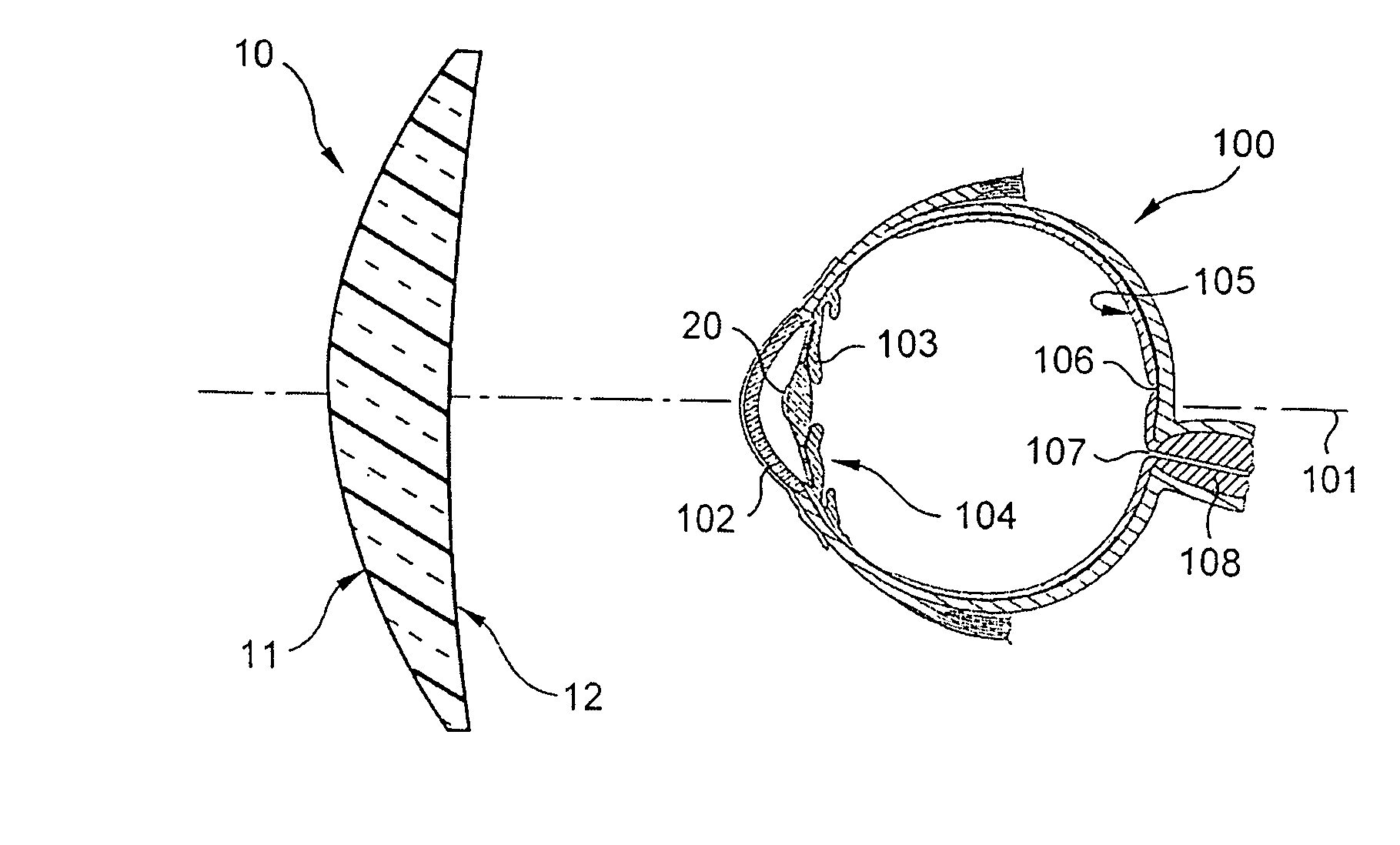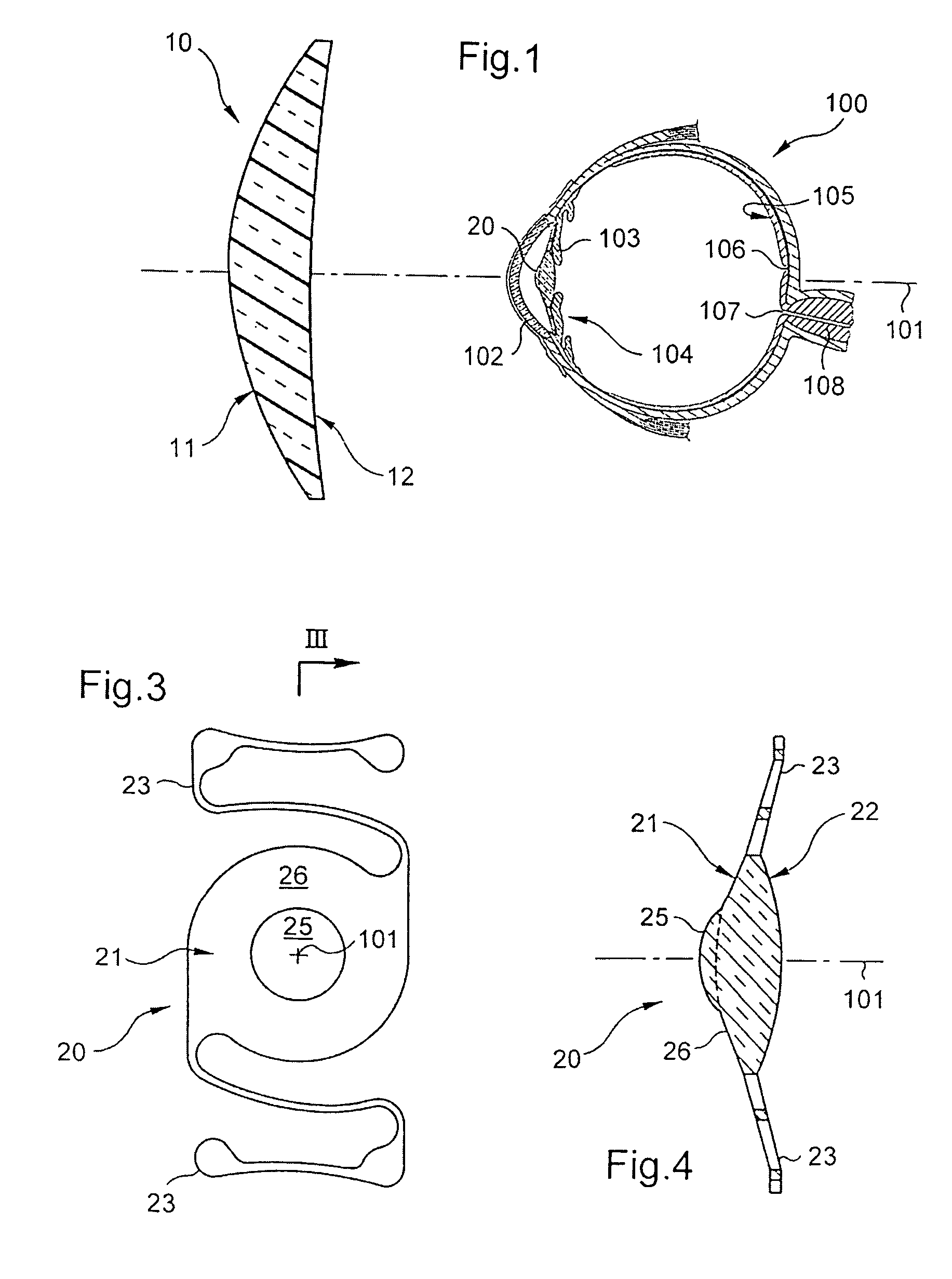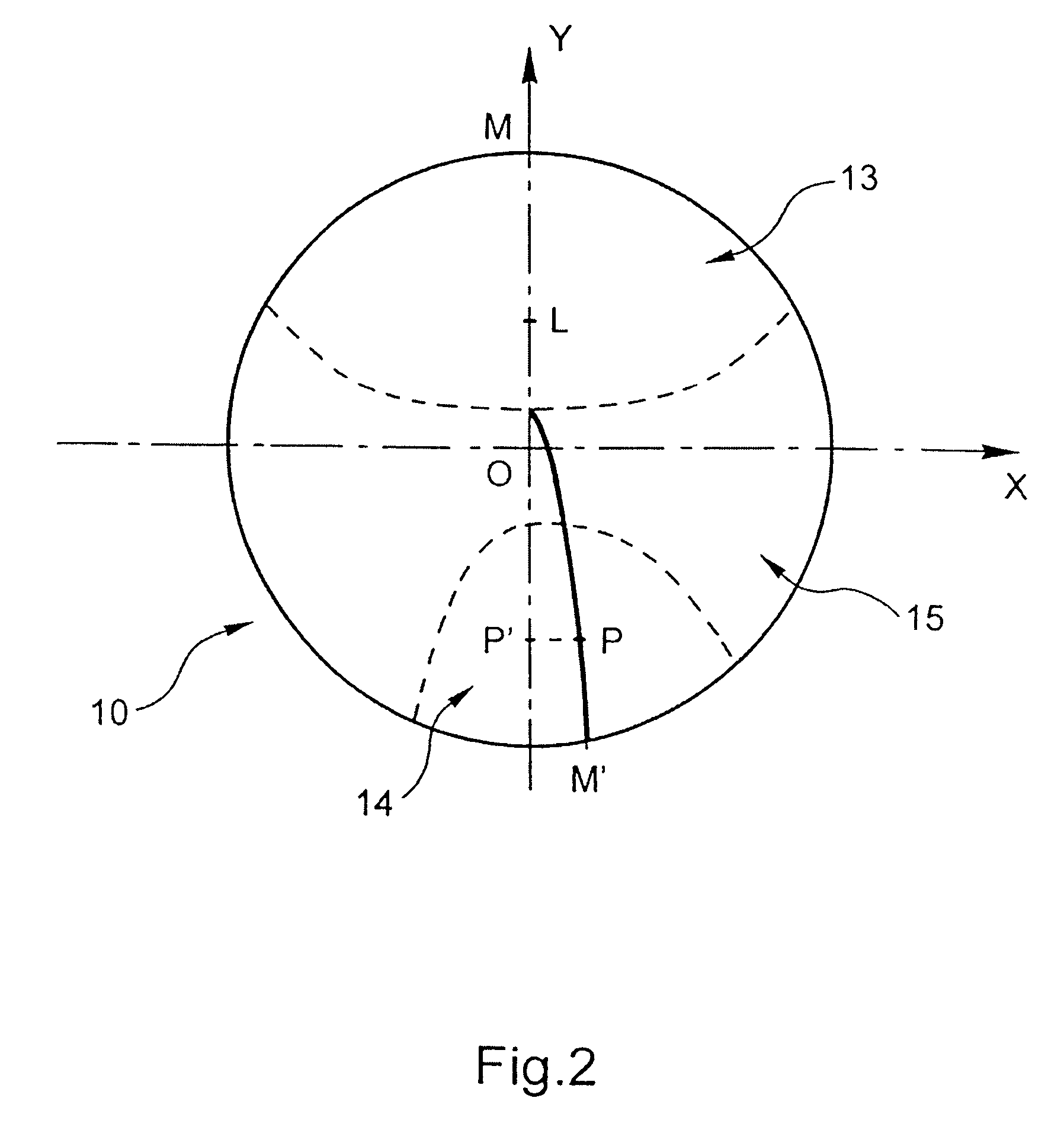Optical accommodative compensation system
a compensation system and optical technology, applied in the field of compensating or correcting vision disorders, can solve the problems of wearers' difficulty in adjusting to high-power progressive lenses, aphakic eye loss of all natural accommodation power, and failure of multifocal implants, etc., to reduce distortion, reduce dependence on pupil diameter, and increase perceived field
- Summary
- Abstract
- Description
- Claims
- Application Information
AI Technical Summary
Benefits of technology
Problems solved by technology
Method used
Image
Examples
Embodiment Construction
[0040]In the context of the present description, the following definitions are used.
[0041]The optical function of an ophthalmic lens, which gives it its correction or compensation power, is defined by its spherical, cylindrical, and prismatic refractive power properties. It will be understood that such an optical definition is of a scope that is more general than a definition purely in terms of surfaces: it defines the overall refraction effect of the lens on an incident light ray, resulting from the algebraic sum of two refractions taking place successively on the front and rear faces of the lens. This optical definition covers a plurality, or indeed an infinity, of combinations of surface pairs producing the same overall optical refraction effect, as set out in the document “Theoretical aspects of concentric varifocal lenses” by W. N. Charman, in Ophthal. Physiol. Opt. Vol. 2, No. 1, pp. 75-86, 1982, published by Pergamon Press for the British College of Ophthalmic Opticians.
[0042...
PUM
 Login to View More
Login to View More Abstract
Description
Claims
Application Information
 Login to View More
Login to View More - R&D
- Intellectual Property
- Life Sciences
- Materials
- Tech Scout
- Unparalleled Data Quality
- Higher Quality Content
- 60% Fewer Hallucinations
Browse by: Latest US Patents, China's latest patents, Technical Efficacy Thesaurus, Application Domain, Technology Topic, Popular Technical Reports.
© 2025 PatSnap. All rights reserved.Legal|Privacy policy|Modern Slavery Act Transparency Statement|Sitemap|About US| Contact US: help@patsnap.com



